Through education and incident investigation, hunters learn how to make hunting safer.
A gray file cabinet sits in the corner of my office. In it, plain manila folders are filled with reports, maps, and witness statements. These are the artifacts of beautiful mornings marred by tragedy and crisp fall days that ended a life too soon. During my career, I’ve worked as a hunting incident investigator — that person you never want to see in the field. The person that is called when things have gone terribly wrong.
As hunting incident investigators, we care deeply about finding the truth and it’s not always easy or cut and dry. We step back and let the evidence tell us what happened and follow where it leads. We often call what we do “CSI in the woods,” a nod to some of those Crime Scene Investigation shows on TV. No matter what we find, our goal is always to share what we learned with hunters to prevent future hunting incidents. In most cases, these incidents are preventable.
Statistically, hunting is a safe outdoor activity, resulting in fewer injuries than other popular sports and daily activities. According to the International Hunter Education Association (IHEA), out of the 11.5 million hunters in the U.S, in an average year fewer than 1,000 people are involved in a hunting-related shooting. Of those, fewer than 75 are fatalities. Due to the widespread use of blaze orange and mandatory hunter education programs, hunting incidents have declined in the last 30 years. Hunting is safe and getting safer.
Every season, Missouri hunters enjoy time spent in the field. We enjoy watching younger hunters discover the magic of hunting as we pass down traditions that our parents and grandparents taught us. We expect to go to the field to hunt, have a good time, and return home safely. Unfortunately, when hunters don’t follow the basic rules of safe hunting and firearms handling, things can go wrong.
Let’s examine the top four rules for a safe hunt.
- Always point the muzzle in a safe direction. When people are asked, what’s the number one rule of firearms handling, most will answer quickly and with authority, always treat every gun as if it were loaded. That seems like common sense, but it’s wrong. Hunter education teaches the number one rule is always point the muzzle in a safe direction. Also known as “muzzle control.” The muzzle is best defined as the business end of the barrel. If the person handling the firearm always thinks about muzzle control first, they will never point at anything they don’t wish to harm or destroy. Muzzle control is the key to firearms safety and the proper handling of all firearms. It determines everything we do with that firearm, how we hold it, what carry is appropriate, and if a shot is safe and legal. Once proper muzzle control is established, the handler can then check to see if the firearm is loaded and if the safety is engaged. By following this one rule, most incidents can be avoided.
- Identify your target and what is beyond. One common shooting-related hunting incident is known as “victim mistaken for game.” Invariably those involved will say, “I thought I was shooting at” fill in the blank with whatever species you like. Some hunters allow themselves to see what really isn’t there. They hear movement, see color or shape, and in their mind, it appears to be an animal. Rule number two is always 100 percent identify your target and what’s beyond it. Ethical hunters always identify their target as safe and legal before pulling the trigger. The shooter must also check what’s beyond the target and never shoot at an animal on the horizon where there’s no safe backstop for the projectile. A turkey only looks like a turkey and a deer a deer. Always assume thatsound or movement in the woods is another person until it reveals itself otherwise. Follow this rule and you’ll be on your way to being a safe hunter.
- Keep your safety on. Most modern firearms are equipped with some form of safety. A safety is a device that, when engaged, blocks the action of the firearm from firing. Rule number three is always keep your safety on until you’re ready to shoot. Hunters can be tempted to release the safety too soon, but don’t fall for that. First, establish that your shot is safe and in the case of hunting, that your target is legal. Once you do, then and only then, should you release the safety of your firearm. Of course, engaging the safety doesn’t make your firearm safe, only you can make your firearm safe. While your firearm may or may not be equipped with a safety, you always have a safety on-board, and that’s your brain. Think first, always follow the firearm safety rules, and then you’ll be safe.
- Keep your finger off the trigger. Hand a firearm to an inexperienced shooter and often the first thing they’ll do is put their finger on the trigger. That’s where your finger goes, right? Wrong! Remember rule number four: the finger only goes on the trigger when you are absolutely ready to fire. If you’re a hunter, then you’ve identified your game and determined it’s a safe shot. Only then do you place your finger within the trigger guard and on the trigger for a shot. When walking with a firearm, keep the finger off the trigger and along the receiver of the firearm. If you trip or fall, the firearm has less of a chance of accidental discharge.
These are not all the safety rules, but these four simple rules lay the foundation for every other rule in the book. There’s a reason these rules are printed in books, manuals, and pamphlets — good people have ignored them and lost.
After years of investigating and studying hunting incidents, I still love to hit the field with my firearm for a long hunt with family and friends. I relish the opportunity to share my hunting knowledge with the younger generation. More beautiful mornings and crisp fall days are ahead, so please hunt safe out there.
Sign Up For Hunter Education
With deer season just around the corner, avoid the rush and sign up for a hunter education course through MDC.
Missouri requires hunter education for anyone born on or after Jan. 1, 1967, and buys a firearms season hunting permit, or any person age 11 to 15 who hunts alone. The course provides instruction on firearms, safety, skills, and ethics.
MDC provides several ways to become hunter education certified. The course is divided into a knowledge section and a skills session that includes an exam. Both the knowledge and skills portion must be completed to become certified.
An online program is one option, which can be done from anywhere with computer and internet access. Participants 16 and older can complete the entire course online and don’t need to attend an in-person skills session. Participants 11 to 15 can complete the knowledge requirement online, but must attend and pass a skills session to receive certification. The cost for those who complete the course and pass the exam is $19.95. Study guides are available for free at MDC offices or by ordering them online.
For those preferring a traditional, in-person educational approach, MDC also offers a free, fourhour classroom session to satisfy hunter knowledge requirements. This includes lectures, videos, and filling out chapter reviews.
Missouri Hunter Education courses are offered at varying dates at MDC facilities, as well as at conservation partner locations across the state. For more information, visit, short.mdc.mo.gov/ZkY.




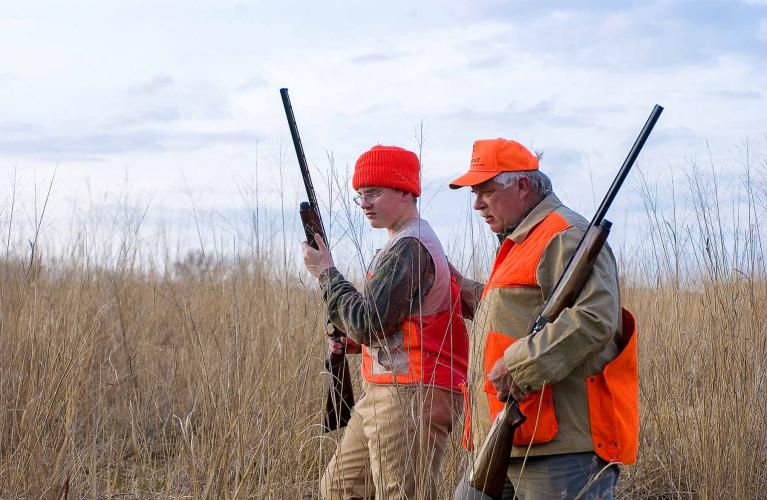
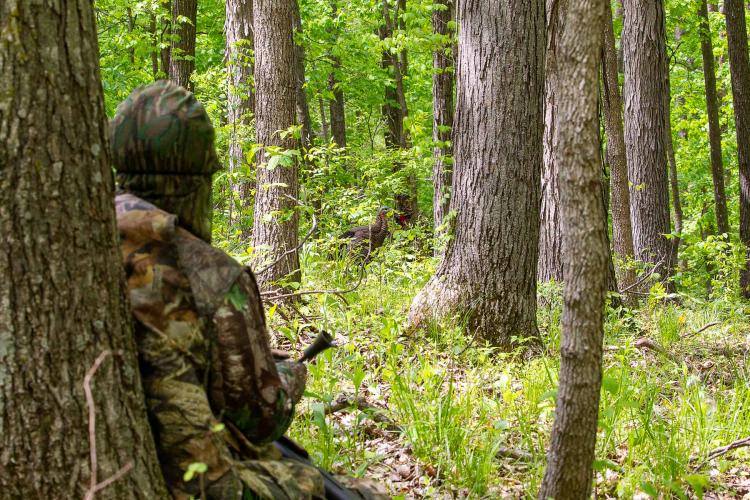

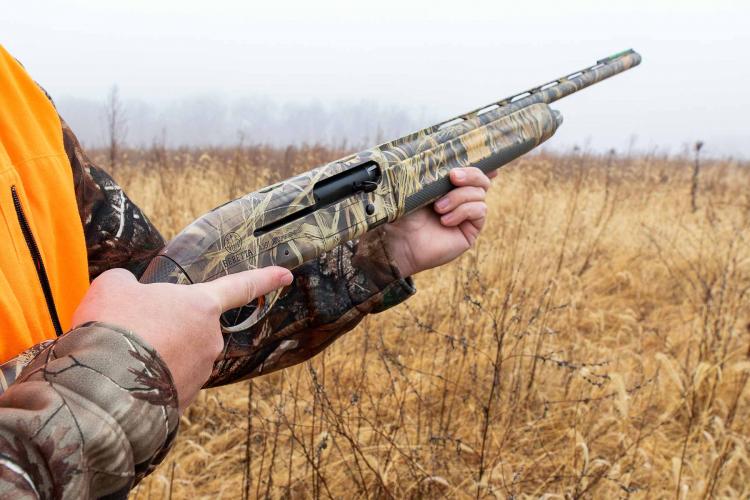
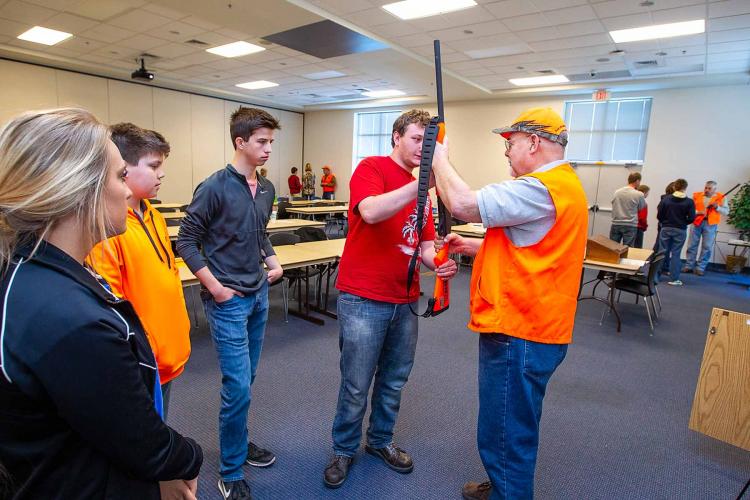
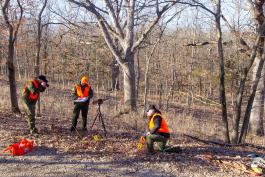
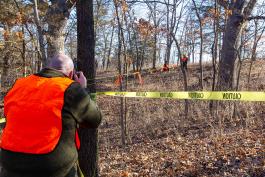



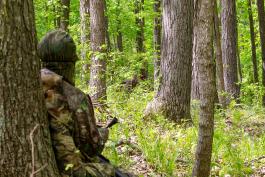

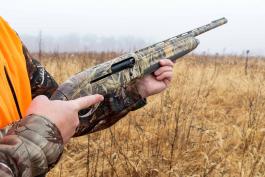
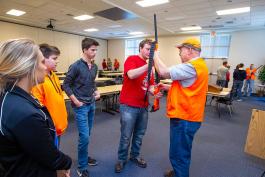
Also In This Issue


And More...
This Issue's Staff
Editor - Angie Daly Morfeld
Associate Editor - Larry Archer
Staff Writer - Bonnie Chasteen
Staff Writer - Heather Feeler
Staff Writer - Kristie Hilgedick
Staff Writer - Joe Jerek
Art Director - Cliff White
Designer - Shawn Carey
Designer - Les Fortenberry
Designer - Marci Porter
Photographer - Noppadol Paothong
Photographer - David Stonner
Circulation - Laura Scheuler






















